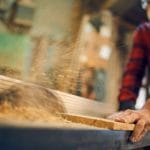Hardwood floors are a gorgeous and valuable investment for your home, which means you want to do everything you can to keep them in good shape. A lot of wood floor maintenance revolves around preventing moisture and water damage. Spills, plumbing leaks, and humidity levels can cause moisture to seep into your natural wood floors, making them warp and crack. Whether it’s surface-level imperfections or deep structural issues, water damage takes its toll on engineered and solid hardwood alike. Fortunately, there are plenty of surefire tips for protecting your wood floors from water damage. Check out these steps and ideas for keeping your wood floors clean, safe, and beautiful for years to come.
Make a Spill Plan
It’s impossible to keep a room completely clean. If you’re going to live in your home, you’re also going to make messes in your home. This fact is true even if you have gleaming hardwood floors to take care of. The trick is to stay on top of messes before they can do any serious damage. Water, drinks, and other spills will seep into your wood floors, so be sure to dry them quickly to prevent any lasting issues. If you have wood floors in more spill-prone areas of the home—like a kitchen or dining room—keep a towel on hand so that you can act quickly when accidents occur.
Manage Humidity Levels
The water in the air can also affect your wood floors. High humidity levels surround your floors with moisture-heavy air that can seep into the wood and cause it to expand. While a certain level of expansion and contraction is natural as the seasons change, too much can cause your floors to buckle. One of the best tips for protecting your wood floors from water damage is to invest in a humidifier to control the moisture in your home. To keep your wood floors safe, you want to maintain a relative humidity level of 30 to 50 percent.
Seal for Extra Protection
There are many benefits to sealing your hardwood floors, including better moisture resistance. Sealing your wood flooring during installation takes more time and money, but the investment is worth the extra protection you get. In addition to better water resistance, sealed wood floors hold up better against scratches, dents, and other normal wear and tear. Reinforce the sealant on your wood floors periodically to ensure that they have as much protection as possible.






